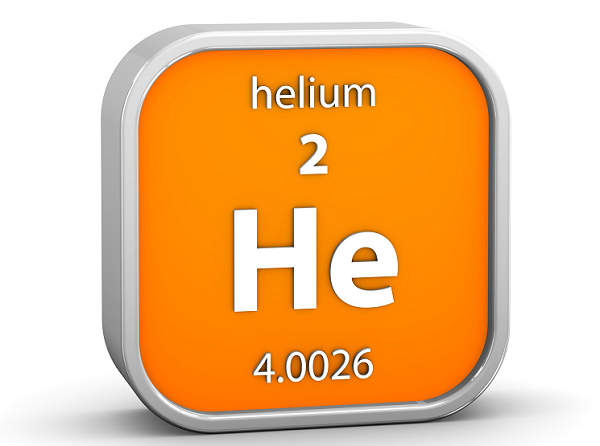Helium was first discovered in the Sun. French astronomer Pierre Janssen in 1868 found proof that a new element existed in the Sun. He called the element helium. Helium was isolated by Sir William Ramsay and independently by N. A. Langley and P. T. Cleve at 1895 in London, England and Uppsala, Sweden.
Helium is a chemical element with atomic number 2 which means there are 2 protons and 2 electrons in the atomic structure. Helium atoms have 2 electrons and the shell structure is 2. The ground state electronic configuration of neutral helium is 1s2 and the term symbol of helium is 1S0. Technical data for Helium. Click here to buy a book, photographic periodic table poster, card deck, or 3D print based on the images you see here!
Physical Properties
-457.96 °F

Atomic Properties

Electron Configuration
Isotopes
There are two of Helium, 3He, and 4He.
Helium-4, the most common isotope is produced on Earth.
Helium-3 is present on Earth only in trace amounts.
He - Helium
Helium Menu
- Helium Page One
- Helium Page Two
Nuclides / Isotopes
| Nuc- lide | Atomic Mass | NN | Abun % | Spin | Half Life | DM | DT | BR % | Decay Energy (MeV) |
|---|---|---|---|---|---|---|---|---|---|
| He3 | 3.016 | 1 | Syn | 1/2+ | Stable | ||||
| He4 | 4.0026 | 2 | 100. | 0+ | Stable | ||||
| He5 | 5.0122 | 3 | Syn | 3/2- | α | N1 | 0.890 | ||
| N | He4 | 0.890 | |||||||
| He6 | 6.0189 | 4 | Syn | 0+ | 806.7ms | β- | Li6 | 3.508 | |
| He7 | 7.028 | 5 | Syn | 3/2- | N | He6 | 0.440 | ||
| He8 | 8.0339 | 6 | Syn | 0+ | 119ms | β- + N | Li7 | 16 | 8.619 |
| 119ms | β- | Li8 | 10.653 | ||||||
| He9 | 9.0438 | 7 | Syn | 1/2- | N | He8 | 1.150 | ||
| He10 | 10.0524 | 8 | Syn | 0+ | N | He9 |
| Nuclide | Potential Parent Nuclides |
|---|---|
| He3 | H3 (Syn) Li4 (Syn) |
| He4 | Be6 (Syn) B8 (Syn) He5 (Syn) Li5 (Syn) |
| He5 | None known |
| He6 | He7 (Syn) |
| He7 | None known |
| He8 | He9 (Syn) |
| He9 | He10 (Syn) |
| He10 | None known |
Key:
| |
Helium Menu
- Helium Page One
- Helium Page Two
References
A list of reference sources used to compile the data provided on our periodic table of elements can be found on the main periodic table page.
Related Resources
- Anatomy of the Atom
Answers many questions regarding the structure of atoms. - Molarity, Molality and Normality
Introduces stoichiometry and explains the differences between molarity, molality and normality. - Molar Mass Calculations and Javascript Calculator
Molar mass calculations are explained and there is a JavaScript calculator to aid calculations. - Chemical Database
This database focuses on the most common chemical compounds used in the home and industry.
Citing this page
If you need to cite this page, you can copy this text:
Kenneth Barbalace. Periodic Table of Elements - He - Helium. EnvironmentalChemistry.com. 1995 - 2021. Accessed on-line: 4/23/2021
https://EnvironmentalChemistry.com/yogi/periodic/He-pg2.html
.
Group 18 (noble Gases)

Linking to this page
If you would like to link to this page from your website, blog, etc., copy and paste this link code (in red) and modify it to suit your needs:
<a href='https://EnvironmentalChemistry.com/yogi/periodic/He-pg2.html'>echo Periodic Table of Elements: He - Helium (EnvironmentalChemistry.com)</a>- This page provides comprehensive nuclide information for the element element He - Helium including: nuclide decay modes, half-life, branch ratios, decay energy, etc.
.
Helium Periodic Table Bohr Model
NOTICE: While linking to articles is encouraged, OUR ARTICLES MAY NOT BE COPIED TO OR REPUBLISHED ON ANOTHER WEBSITE UNDER ANY CIRCUMSTANCES.
See All Results For This Question
PLEASE, if you like an article we published simply link to it on our website do not republish it.
